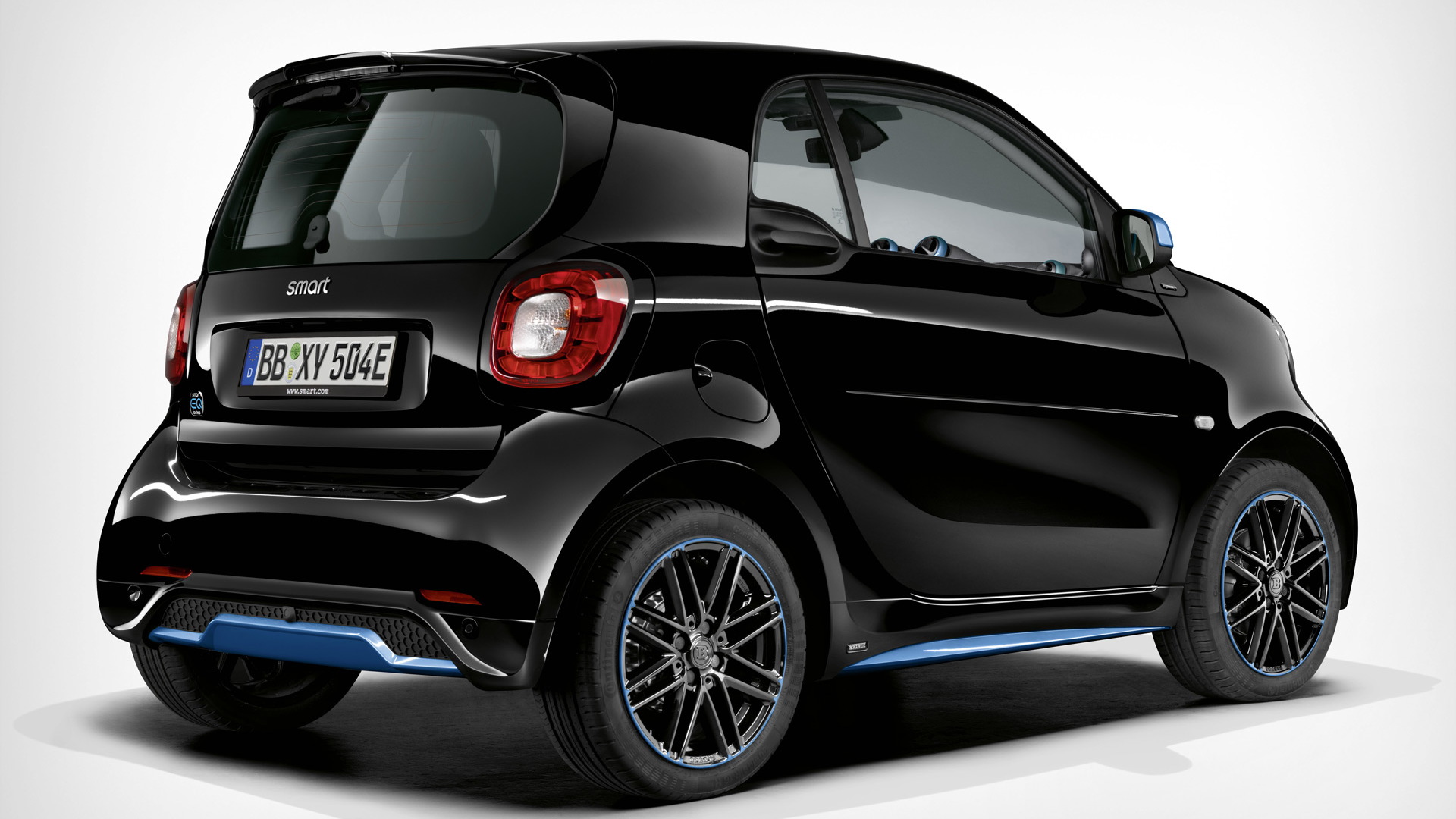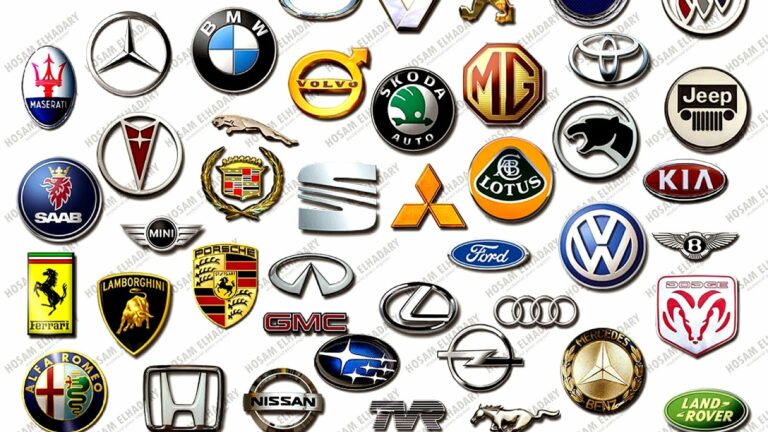Smart Car Brand: Pioneering Urban Mobility for a New Era
Smart Car Brand: Pioneering Urban Mobility for a New Era cars.truckstrend.com
In the bustling labyrinth of modern cities, where traffic congestion and parking woes are daily struggles, a distinct automotive brand emerged with a revolutionary answer: the Smart car. Far more than just a compact vehicle, the Smart Car Brand represents a philosophy—a commitment to intelligent, efficient, and sustainable urban mobility. From its quirky, instantly recognizable design to its pioneering shift towards electric powertrains, Smart has carved out a unique niche, challenging conventional notions of what a car should be and how it should serve the needs of urban dwellers.
This comprehensive guide delves into the fascinating world of the Smart Car Brand, exploring its origins, its core philosophy, its evolution through various models, and its pivotal role in shaping the future of city transportation. Whether you’re a seasoned Smart enthusiast, a curious urbanite, or someone considering their next vehicle, this article will provide invaluable insights into a brand that has consistently thought outside the traditional automotive box.
Smart Car Brand: Pioneering Urban Mobility for a New Era
The Genesis and Evolution of Smart: A Journey in Urban Mobility
The story of Smart is one of innovation born from necessity, driven by a visionary concept. The brand’s origins trace back to the early 1990s, when Nicolas Hayek, the founder of Swatch watches, envisioned a highly customizable, compact city car that would be environmentally friendly and easy to park. His initial partnership with Volkswagen didn’t materialize, but the concept soon captured the attention of Daimler-Benz (now Mercedes-Benz Group AG).
In 1994, Micro Compact Car AG (MCC) was formed as a joint venture between Daimler-Benz and Swatch, with the goal of bringing Hayek’s "Swatchmobile" to life. The first production model, the Smart City-Coupe (later renamed Fortwo), debuted in 1998. It was an immediate sensation, not for its sales volume, but for its audacious design: a tiny, two-seater vehicle with interchangeable plastic body panels and a revolutionary "Tridion safety cell" designed to protect occupants in a collision.
Over the years, Smart expanded its lineup, introducing the slightly larger four-seater Smart Forfour (initially in partnership with Mitsubishi, later with Renault) and even a roadster. However, the Fortwo remained the brand’s enduring icon. A significant turning point came in the late 2000s and 2010s as Smart began its gradual transition towards an all-electric future. By 2017, Smart became the first automotive brand to fully convert its entire product line to electric propulsion in North America, a move that foreshadowed its global electrification strategy.
The most recent and significant chapter in Smart’s evolution began in 2019 when Daimler AG and Zhejiang Geely Holding Group (Geely) formed a 50:50 joint venture, Smart Automobile Co., Ltd. This partnership marked a new era, repositioning Smart as a leading provider of premium all-electric vehicles, designed and engineered in Germany, and manufactured in China. This collaboration has since given birth to a new generation of Smart vehicles, moving beyond the traditional two-seater and into the rapidly growing electric SUV/crossover segment.
The Smart Philosophy: Ingenuity in Compact Design
At its heart, the Smart Car Brand has always been defined by a unique philosophy centered on ingenuity in compact design. This philosophy translates into several core tenets that set Smart vehicles apart:
- Miniaturization without Compromise: Smart cars are engineered to be as small as possible while maximizing interior space and occupant comfort. Every inch is utilized efficiently, making them masters of urban environments.
- Unparalleled Maneuverability: The compact dimensions, combined with an incredibly tight turning radius (especially in the Fortwo, which can famously turn almost within its own length), make Smart cars exceptionally agile in congested city streets and tight parking spots.
- Efficiency as a Core Value: From their early internal combustion engines designed for fuel economy to their current all-electric powertrains, Smart vehicles prioritize energy efficiency, reducing both running costs and environmental impact.
- The Tridion Safety Cell: A cornerstone of Smart’s design philosophy is safety. The visible, high-strength steel Tridion safety cell acts like a hard nut around the occupants, distributing impact forces across its structure. Despite their small size, Smart cars consistently perform well in crash tests, debunking common misconceptions about their safety.
- Distinctive and Customizable Design: Smart cars have always boasted a playful, unique aesthetic. The original interchangeable body panels offered personalization, and even today, their designs stand out with a blend of modernism and urban chic.


This philosophy has allowed Smart to offer practical solutions for urban living, proving that smaller can indeed be smarter.
A Deep Dive into Smart Models
The Smart Car Brand’s model lineup has undergone significant transformations, reflecting its evolving mission and technological advancements.
Smart Fortwo (and EQ Fortwo)

The quintessential Smart car, the Fortwo is synonymous with the brand.
- Dimensions: Approximately 2.7 meters (8.8 feet) long, making it one of the shortest production cars in the world.
- Seating: Strictly a two-seater, prioritizing individual or couple urban transport.
- Design: Characterized by its short overhangs, prominent Tridion cell, and often contrasting body panels.
- Evolution: Initially offered with small petrol and diesel engines, the Fortwo fully transitioned to electric power as the Smart EQ Fortwo. The EQ Fortwo offers instant torque, silent operation, and a range suitable for daily city commutes (typically 80-100 miles / 130-160 km WLTP, depending on generation and driving conditions). It remains a master of parallel parking and navigating narrow streets.
Smart Forfour (and EQ Forfour)
Introduced to offer a more practical option for small families or those needing occasional rear seating.
- Seating: Four-seater, with rear doors providing access to the back.
- Platform: The first generation shared its platform with the Mitsubishi Colt. The second generation (from 2014) was developed alongside the Renault Twingo, sharing many components.
- Dimensions: Still compact compared to most cars, but significantly longer than the Fortwo.
- Status: While it offered more versatility, the Forfour never achieved the iconic status or sales volume of the Fortwo and has largely been phased out, especially in its electric EQ variant, in favor of the new generation of larger electric Smart vehicles.
The New Generation: Smart #1 and Smart #3
The joint venture with Geely has ushered in a completely new era for Smart, moving beyond the compact city car segment into the burgeoning electric SUV/crossover market. These new models are built on Geely’s Sustainable Experience Architecture (SEA) platform, designed specifically for electric vehicles.
- Smart #1: The first of the new generation, the #1 is a compact electric SUV/crossover.
- Design: Features a sleek, modern design with seamless surfaces, short overhangs, and a panoramic glass roof. It retains some Smart design cues but scales them up.
- Performance: Available with single-motor rear-wheel drive (typically 272 hp) or dual-motor all-wheel drive (Brabus variant with 428 hp).
- Range: Offers a significantly improved range compared to the EQ Fortwo, typically exceeding 250 miles (400 km) WLTP, making it suitable for longer journeys beyond the city.
- Technology: Packed with advanced infotainment, driver-assistance systems, and over-the-air updates. It targets a younger, tech-savvy audience seeking a stylish and practical electric vehicle.
- Smart #3: Following the #1, the #3 is an electric SUV coupe, presenting a sportier, more dynamic silhouette.
- Design: Features a lower roofline and a more sloped rear, giving it a coupé-like profile. It shares the modern design language and interior tech of the #1.
- Performance & Range: Expected to offer similar powertrain options and range capabilities as the #1, with a focus on a more engaging driving experience.
- Target Audience: Appeals to those who desire the practicality of an SUV but with a more expressive and athletic design.
These new models represent Smart’s ambition to become a global player in the premium electric vehicle segment, leveraging the strengths of both Mercedes-Benz’s design prowess and Geely’s advanced EV platform and manufacturing capabilities.
The Unrivaled Benefits of Smart Ownership
Owning a Smart car, particularly the iconic Fortwo or the new electric models, comes with a host of distinct advantages:
- Unparalleled Urban Agility: This is the Smart’s superpower. Its compact size makes navigating congested city streets, tight turns, and finding parking spots incredibly easy. For the Fortwo, the ability to parallel park in spaces others wouldn’t dare approach is a game-changer.
- Environmental Stewardship: With its full transition to electric vehicles, Smart is at the forefront of sustainable mobility. Zero tailpipe emissions contribute to cleaner urban air, and the reduced energy consumption helps lower one’s carbon footprint.
- Cost-Effectiveness: Electric Smart cars benefit from lower "fuel" costs (electricity is generally cheaper than petrol), reduced maintenance (fewer moving parts in EVs), and often government incentives or tax breaks for electric vehicles.
- Distinctive Style and Brand Identity: A Smart car stands out. Its unique proportions and often vibrant color schemes make it a head-turner. Owners often feel part of a unique community.
- Safety Innovation: The Tridion safety cell provides a robust safety cage, offering impressive occupant protection despite the car’s small size. This engineering marvel addresses common safety concerns associated with compact vehicles.
- Easy Charging (for EVs): With smaller battery capacities (especially in the EQ Fortwo), charging times are relatively short, whether at home or public charging stations. The new #1 and #3 models offer faster charging capabilities.
Navigating the Purchase: Key Considerations for Prospective Buyers
Deciding if a Smart car is right for you involves several important considerations:
- Needs Assessment:
- Urban Commuter/Solo Driver: The EQ Fortwo is ideal for daily commutes, short errands, and navigating dense urban environments where parking is scarce.
- Small Family/Occasional Passengers: The new Smart #1 or #3 offers significantly more space, versatility, and range, making them suitable for broader use cases, including weekend trips.
- Electric Transition Readiness:
- Charging Infrastructure: Do you have access to home charging (wall outlet, Level 2 charger) or reliable public charging networks?
- Range Anxiety: While new models offer ample range, older EQ Fortwo models have limited range, requiring careful planning for longer trips.
- Budget: Smart cars, especially the new premium electric models, are positioned at a competitive price point within the EV market. Consider initial purchase cost, potential incentives, and long-term running costs.
- After-Sales Support and Network: For newer models like the #1 and #3, verify the dealership and service network in your region. For older or used Smart cars, assess the availability of specialized mechanics and parts.
- Test Drive: Always test drive the specific model you’re considering. Experience its turning radius, acceleration, and interior comfort firsthand. Pay attention to visibility and cargo space.
Practical Advice for Smart Car Owners
Once you’re a proud Smart owner, here’s some practical advice to maximize your experience:
- Embrace Urban Efficiency: Leverage your Smart’s compact size for strategic parking. Don’t be afraid of tight spots! Its maneuverability makes three-point turns a breeze.
- Master EV Charging Etiquette: For electric Smart cars, familiarize yourself with different charging levels (Level 1, Level 2, DC Fast Charging), public charging networks, and consider installing a home charger for convenience.
- Regular Maintenance is Key: Even EVs require routine checks (tires, brakes, fluid levels, software updates). Follow the manufacturer’s recommended service schedule to ensure longevity and optimal performance.
- Personalize Your Smart: Smart cars have always lent themselves to customization. Explore accessories, wraps, or interior accents to make your car uniquely yours.
- Engage with the Community: There are active Smart car clubs and online forums where you can share tips, seek advice, and connect with fellow enthusiasts.
Challenges and Forward-Looking Solutions
While the Smart Car Brand offers compelling advantages, it has also faced challenges:
- Perception of Size and Safety: Despite the Tridion cell’s effectiveness, some consumers perceive small cars as inherently unsafe.
- Solution: Ongoing education about crash test ratings and the engineering behind the Tridion cell. The larger footprint of the new #1 and #3 also naturally addresses this perception for a broader audience.
- Limited Practicality (Fortwo): The two-seater Fortwo, by design, has limited passenger and cargo capacity, restricting its appeal to certain demographics.
- Solution: The introduction of the #1 and #3 models directly tackles this by offering more spacious and versatile electric vehicles, while still maintaining a premium, urban-centric focus.
- Range Anxiety (Older EVs): Early electric Smart models had relatively short ranges, a concern for some drivers.
- Solution: Newer Smart EVs like the #1 and #3 feature significantly larger battery packs and more efficient powertrains, providing competitive ranges that alleviate most range anxiety for daily use and even longer trips.
- Brand Reinvigoration and Market Positioning: After years of struggling with profitability under Daimler, Smart needed a fresh start.
- Solution: The joint venture with Geely has provided the necessary investment, platform technology, and manufacturing scale to relaunch Smart as a global premium EV brand, targeting new markets and customer segments.
Smart Car Brand Price Table (Indicative)
Please note that prices are approximate, can vary significantly by region (due to taxes, duties, and local incentives), trim level, optional features, and the time of purchase. "New" prices are for the latest generation models, while "Used" refers to the older, often discontinued, models.
| Model | Type | Seating | New/Used | Approximate Price Range (USD/EUR) | Key Features (Brief) | Electric Range (WLTP) | Notes |
|---|---|---|---|---|---|---|---|
| Smart Fortwo EQ | Electric City Car | 2 | Used | $8,000 – $25,000+ | Ultra-compact, Tridion safety cell, rear-motor RWD, easy parking, city-focused. | 80-100 miles (130-160 km) | Prices vary widely based on year, mileage, and condition. Discontinued for new sales in many markets. |
| Smart Forfour EQ | Electric City Car | 4 | Used | $10,000 – $28,000+ | Compact 4-seater, shared platform with Renault Twingo, similar urban focus. | 80-100 miles (130-160 km) | Less common than Fortwo. Discontinued for new sales in many markets. |
| Smart #1 | Electric Compact SUV | 5 | New | $40,000 – $55,000+ | Modern design, advanced tech, panoramic roof, multiple power options (RWD/AWD), premium interior. | 250-275 miles (400-440 km) | New generation under Geely partnership. Available in Pro+, Premium, Brabus trims. |
| Smart #3 | Electric SUV Coupe | 5 | New | $42,000 – $58,000+ | Sportier, coupé-like silhouette, similar tech and performance to #1, focus on dynamic styling. | 250-275 miles (400-440 km) | New generation, aimed at a more style-conscious buyer. |
Note: Prices are highly indicative and subject to change based on market, specific trim levels, optional extras, and local government incentives for EVs.
Frequently Asked Questions (FAQ)
Q1: Is a Smart Car safe?
A1: Yes, Smart cars are designed with safety as a priority, particularly through their "Tridion safety cell." This high-strength steel frame acts like a roll cage, protecting occupants by distributing impact forces. Despite their small size, Smart cars have performed well in independent crash tests.
Q2: Are Smart Cars reliable?
A2: Like any car brand, reliability can vary by model year and maintenance. Generally, Smart cars have a reputation for being reliable for their intended urban use. The electric models (EQ Fortwo, #1, #3) benefit from simpler powertrains with fewer moving parts, which can lead to lower maintenance needs and potentially higher long-term reliability.
Q3: What is the range of an electric Smart car?
A3: The range varies significantly by model. The older Smart EQ Fortwo typically offers a real-world range of 80-100 miles (130-160 km) WLTP, making it ideal for city driving. The newer Smart #1 and #3 models offer a much longer range, typically exceeding 250 miles (400 km) WLTP, making them suitable for longer journeys.
Q4: Who manufactures Smart cars now?
A4: Smart Automobile Co., Ltd. is a 50:50 joint venture between Mercedes-Benz Group AG and Zhejiang Geely Holding Group (Geely). Mercedes-Benz handles the design, while Geely provides the engineering and manufacturing capabilities.
Q5: Can Smart cars be used for long journeys?
A5: The older Smart Fortwo EQ is primarily designed for urban and short-distance travel due to its limited range and two-seater configuration. However, the new Smart #1 and #3 models, with their larger batteries, increased range, and more spacious interiors, are much more capable of comfortable long journeys.
Q6: What’s the biggest Smart car?
A6: Currently, the Smart #1 is the largest model in the lineup, followed closely by the Smart #3. These new electric SUVs/crossovers are significantly larger and more spacious than the traditional Fortwo or Forfour models.
Q7: Are Smart cars expensive to maintain?
A7: For the older internal combustion engine models, maintenance costs are comparable to other compact cars. For electric Smart cars, maintenance costs are generally lower than their petrol counterparts due to fewer moving parts, no oil changes, and less wear on brakes (due to regenerative braking). However, specific parts for Smart might sometimes be less readily available than for more common brands.
Conclusion: Smart – Driving the Future of Urban Mobility
The Smart Car Brand has journeyed from a quirky, niche urban solution to a pivotal player in the global electric vehicle market. From its audacious beginnings with the Fortwo, challenging the very notion of automotive size, to its current evolution into a premium electric SUV brand with the #1 and #3, Smart has consistently demonstrated a commitment to intelligent design, efficiency, and urban relevance.
Smart cars offer a unique blend of practicality, style, and environmental consciousness. They address the pressing challenges of modern city living—congestion, parking, and pollution—with innovative solutions. The brand’s strategic partnership with Geely signals a robust future, allowing Smart to scale its vision and bring its distinctive approach to a wider audience.
As cities continue to grow and the demand for sustainable, efficient personal transport intensifies, the Smart Car Brand stands poised to lead, proving that the future of mobility isn’t just about getting from A to B, but doing so intelligently, stylishly, and responsibly. Smart is not just a car; it’s a statement about how we live, work, and move in our increasingly urbanized world.






